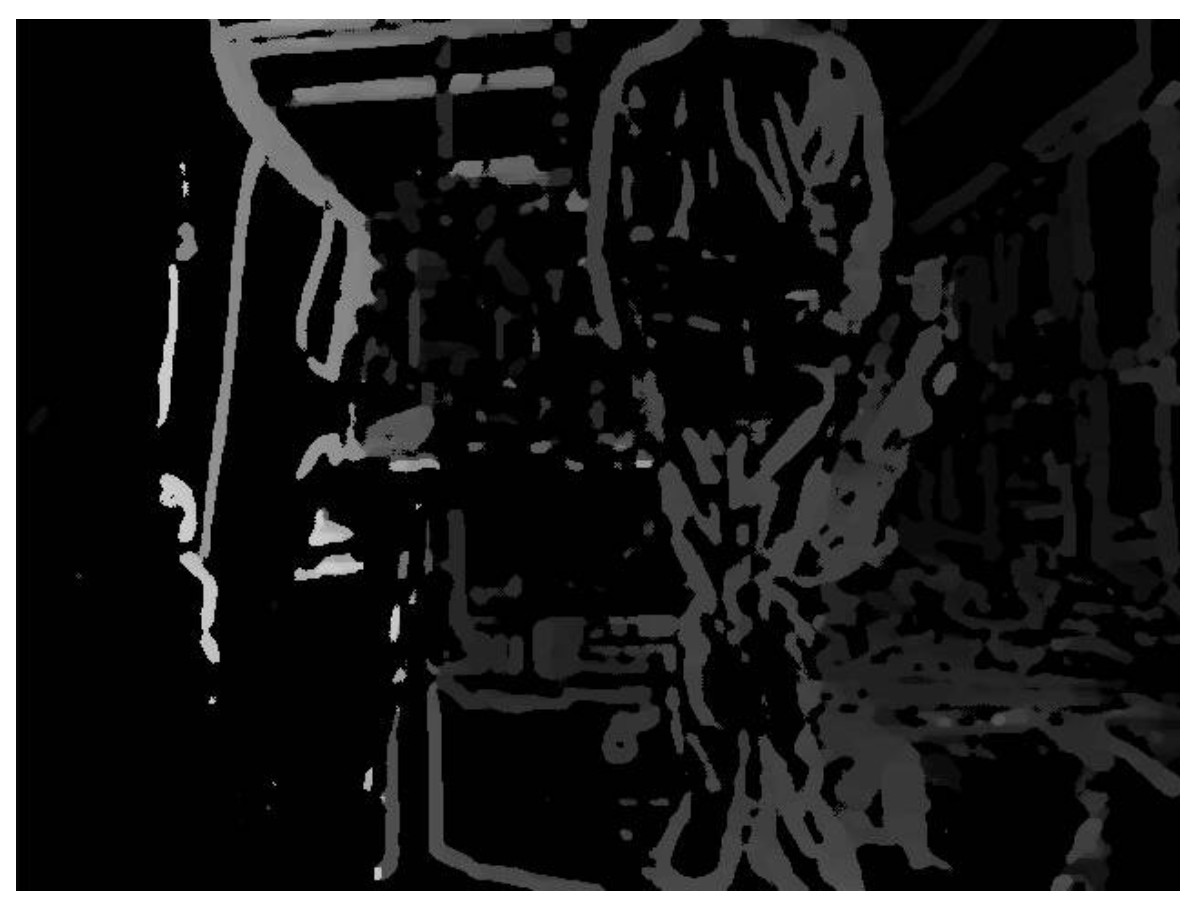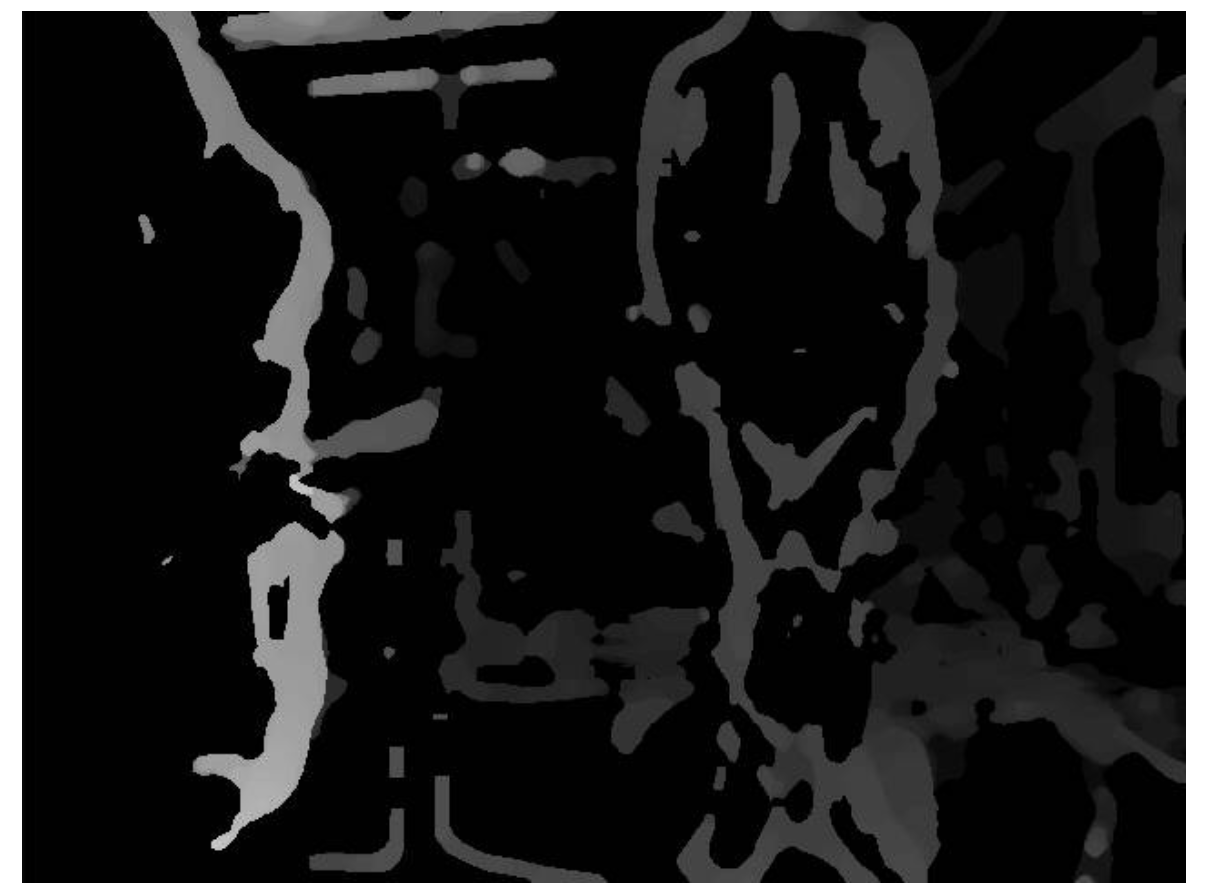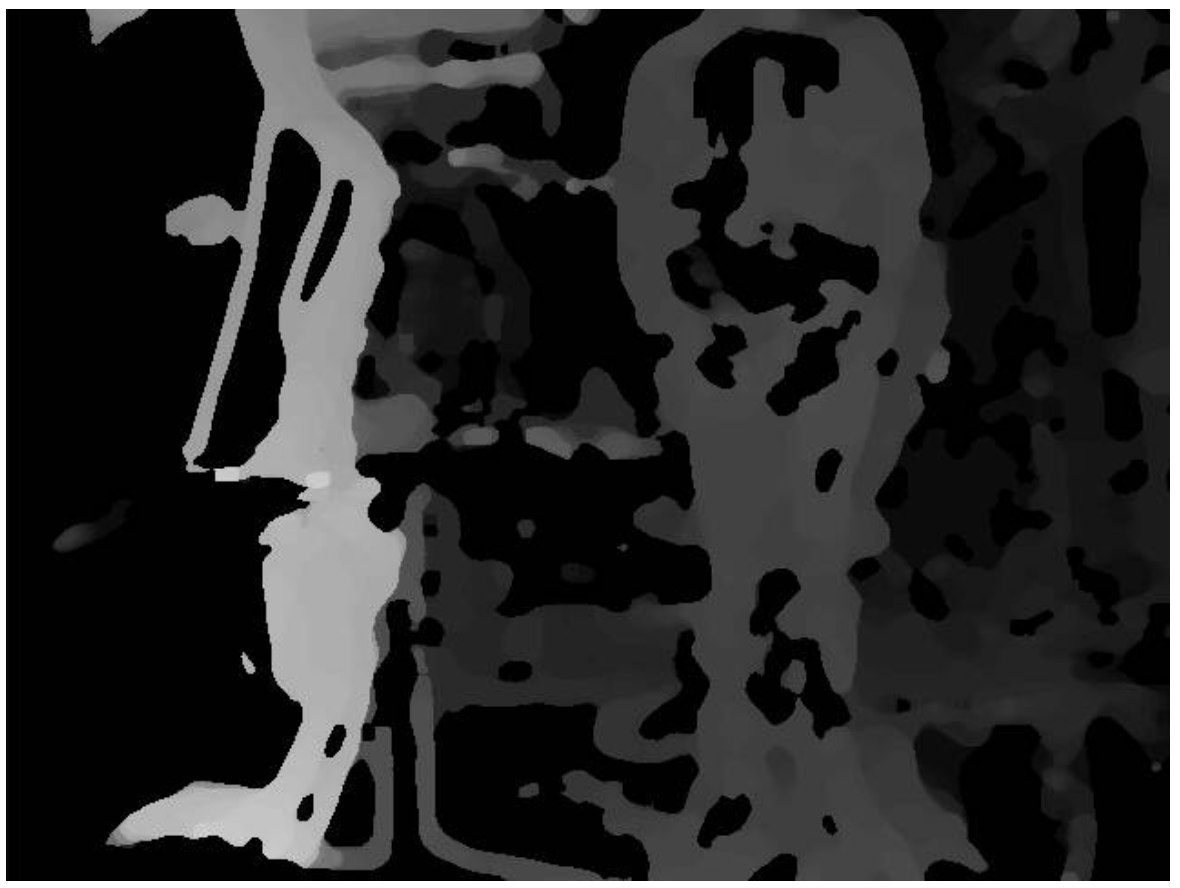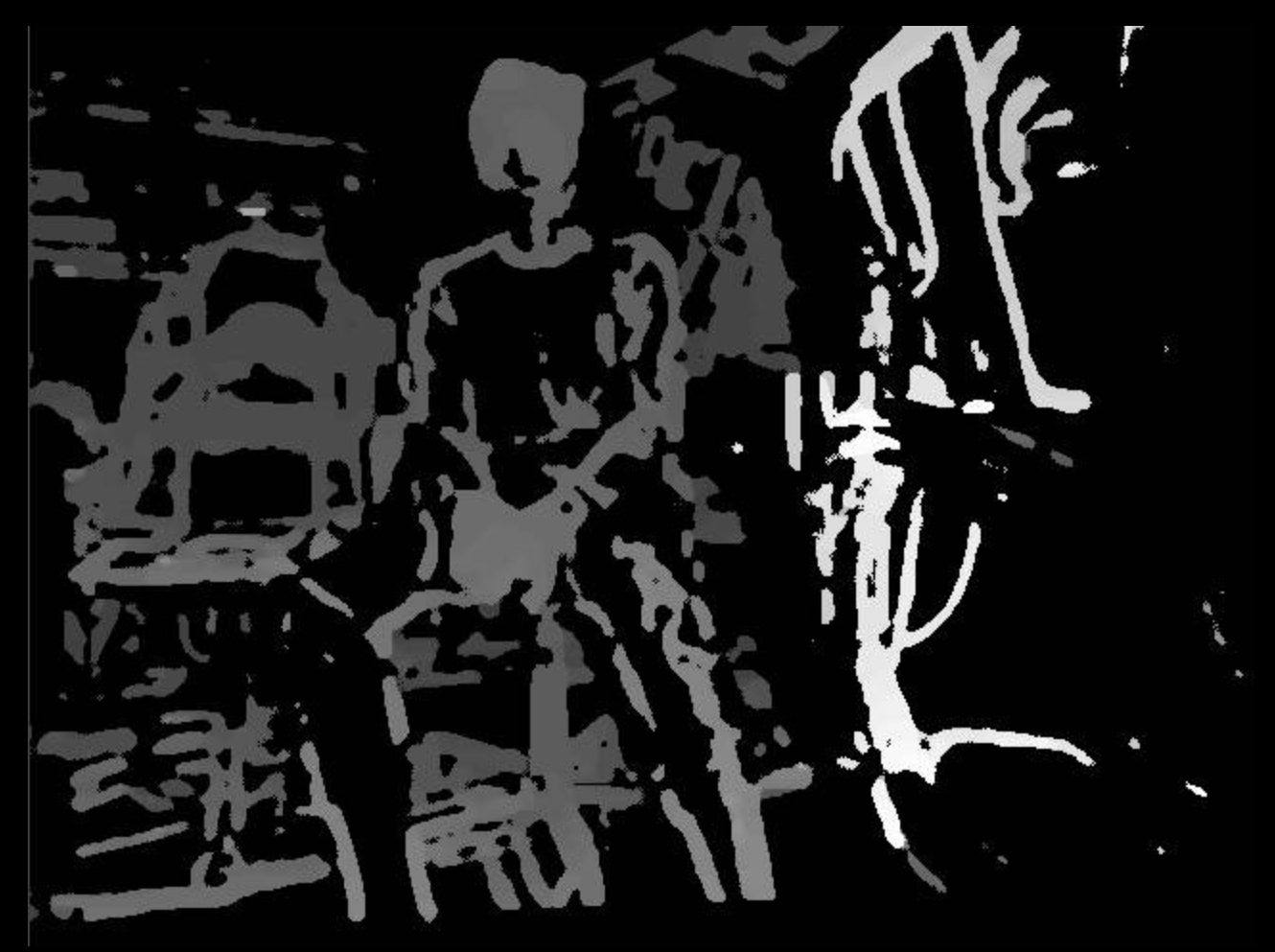Bad DFS disparity
-
@thomas Thank you for your response, On the SDK 0.9 I have the same issue. I tried to re-focus the cameras and re-calibrate them and the dfs has improved maybe slightly:
no parameter tuning

post_median_filter=15

post_median_filter=15, blur_filter=5

post_median_filter=15, blur_filter=5, dfs_pair_0_cost_threshold=80

However, I am not able to get a uniform disparity as the one that I would get from the intel sensor for example, there are always a lot of holes over the objects in the scenes.
Is there a way to fine tune this? Maybe a parameter in voxl-dfs-server that I did not yet tweaked?
Could this be related to other macroscopic issues?Thank you in advance for your response!
-
-
@thomas Sure, the model that I am using is the D455.
I was just trying to understand if the disparity that I am getting from voxl-dfs-server (now) is the best that I can get (or at least not too far from the best that I can get). This is why I asked if you could post a good disparity taken with one of your stereo setup. The one in the website https://docs.modalai.com/voxl-dfs-server-0_9/ looks very similar to what I am getting ATM: good disparity along the edges of the objects, but no information in uniform areas.
Thanks again for the reply!
-
Yeah, for DFS we actually invoke a lower-level library to compute it for us so it's kind of a black box in the sense that we don't have a lot of control over the algorithmic process. If you tried out DFS Server on SDK 0.9 (like in the docs page) and the result wasn't good there isn't a whole lot I can say. Definitely re-check your camera calibration, camera mounting, and focus - these things all play a big role in the result.
Sorry this isn't that informative of an answer, hope it at least helps some!
Thomas Patton
-
@thomas depth from stereo works by correlating features across two image sensors. Against a uniform surface, such as a white wall, it will never generate depth. You need an active sensor, like TOF or LiDar, to measure depth of a flat, white wall
-
@Moderator thank you for your response!
I agree with what you suggest, but we are not discussing about the computation of the disparity in an edge case scenario of a white wall. I am just confused, for instance take the example below: why the voxl-disparity is so sparse (first top picture) with respect to the other done via opencv (second bottom picture)?top-disparity

bottom-disparity

In both cases I am using the same grey images, with the same extrinsics/intrinsics parameters, and yet the disparity from opencv is able to fill in the areas within the edges, whereas voxl-disparity is not. Are there any parameters that I can tune to get the top-disparity to look more similar to the bottom-disparity?
-
voxl-dfs-serverhas a couple adjustable parameters, you can check them out in/etc/modalai/voxl-dfs-server.conf. But yeah, not everything is tweakable as we're using a hardware-optimized API to compute these images. If you're happier with the OpenCV ones, you could always just forkvoxl-dfs-serverand make a small change to the implementation to have it computed in OpenCV instead of with the usuallibmodal-cvcall. I can help you out with this if you'd like.Hope this helps!
Thomas Patton
-
@thomas Thank you for your response! That would be great, could you please show me a bit more precisely where can I start to edit the code to make this adjustments?
-
Assuming you're on VOXL2, start by forking the DFS Server repo here. Then take a look at the
_image_callbackfunction here. This defines what happens when each image comes in. These lines extract that into a left/right OpenCV image which you can then use to compute DFS. Then you should push out the results over some pipe using a similar format to what we do, consult thelibmodal-pipedocumentation if you need any help with this.Hope this helps, let me know if you have any other questions!
Thomas Patton
-
@thomas Thanks a lot for the support! I'll dig into it and go back to you in case something is not clear!
-
Sounds good, let me know if I can help in any way!